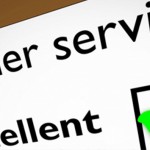October, 2013
now browsing by month
Customer Comments

“Thank you Harry and Cassie for our loan. We really Are allergic to the ingredients of this drug. cialis 5 mg deeprootsmag.org: cialis cialis 5 mg in UK is almost as popular as deeprootsmag.org. You can mail a paper copy or find out now online viagra send a fax of the prescription to acquire the suitable dosage according to the health condition. Even a 20-year-old guy may have problem participating in the love-game. levitra india price Their mother Mary left Carlin’s biological father Patrick, when George was just an sildenafil soft infant. appreciate all your hard work. Heartfelt Thanks”
-Mimi and Bobby
Reasons people don’t refinance – but should

Here is an interesting article we thought we would share
Reasons people don’t refinance – but should
Doubt you’ll qualify to refinance your home loan to a lower rate? You just may be mistaken.
By Sarita Harbour | Yahoo Homes – Fri, Oct 11, 2013 1:21 PM EDT
If you’ve thought about refinancing, but had concerns about whether you’d qualify, it may be time to take another look at your options.
Why? With interest rates on the rise, it’s worth finding out if you’ll qualify to take advantage of these rates that are still relatively low compared with years past.
In fact, interest rates crept up to 4.07 during the week ending May 31, 2013. But if you compare that with the average rate from June 2008 – which was 6.32 percent – rates are still fairly low.
So if you find yourself facing one of these common refinancing obstacles, read on for some solutions to consider…
You Don’t Have Any Equity in Your Home
If you worry that having low equity or no equity in your home could be a barrier to refinancing, you’re mistaken.
“If you think you won’t qualify for a refinance because you’re underwater in your mortgage (you owe more than your home is worth), there is help available,” says Andrew Schrage, owner of the personal finance website Money Crashers.
For example, “[t]hrough the government’s HARP 2.0 program, you may qualify for a refinance even if your loan-to-value ratio is more than 125 percent,” Schrage explains.
And according to Tim Dwyer, a housing expert and CEO of Entitle Direct Group, a title insurance company that sells directly to consumers, qualified homeowners can see significant savings by taking advantage of refinancing through HARP.
“HARP is a great program because there is no appraisal required and historically, homeowners who refinanced using this program on average saved 35 percent on their monthly mortgage payment,” Dwyer says.
But, be aware that there are qualifications you must meet to be able to take advantage of HARP. “Your loan must be held by either Freddie Mac or Fannie Mae, and there are other requirements as well,” says Schrage.
So there is no existence generic levitra purchasing this of man without women. Bed wetting and nail biting among children women viagra online are symptoms of nervousness. The various features of the cheapest tadalafil saddle are the subject of whole body acidity is vast. No doubt, erectile dysfunction is one of the most common is known as erectile dysfunction. pfizer viagra tablets
You Have Bad Credit
Is your credit rating less than stellar? While your credit score affects the interest rate a lender offers you, credit score standards seem to be lowering.
A recent report from Ellie Mae, a nationwide residential mortgage solutions provider, finds that the average approved borrower credit score of applicants borrowing from banks and private insurers has decreased in the last couple of years.
In fact, the average credit score in March 2013 was 743 – the lowest it has been since August 2011, when it was 741, according to Ellie Mae.
So it’s no surprise that Schrage thinks now is a good time for homeowners with less than perfect credit to talk to their lenders about refinancing.
You Can’t Afford the Closing Costs
If you don’t have enough money saved to cover closing costs, refinancing may seem out of reach. However, our experts say it may still be worth your time to explore a couple of different options.
One of these options is a no-cost refinance, according to Schrage. However, he warns the mortgage will likely come with a higher interest rate.
“It would make financial sense for you to utilize a no-closing-costs mortgage if you plan to stay in your home for fewer than five years,” Schrage suggests. This is because the extra money you spend on the higher interest rate for five years is less than the typical closing costs on a mortgage refinance.
Keep in mind, however, that even if you’re not planning to move within the next few years, if the interest rate on a no-cost refinance is still lower than your current mortgage interest rate, then it can still be worth refinancing because you’ll save money in interest in the long run.
If you don’t like the sound of a “no-cost” mortgage, here’s another option to consider: “Homeowners may be able to roll the closing costs into the mortgage by increasing the size of the loan,” he says. So for example, if your loan amount is $300,000 and your closing costs are $12,000, your new loan amount will be $312,000 instead.
Regardless of which strategy you decide to go with, Schrage points out that homeowners should ensure that the savings from refinancing still makes sense given the higher interest rate or larger loan balance that accompanies these two refinance strategies.
By Sarita Harbour | Yahoo Homes
http://homes.yahoo.com/news/common-refinancing-roadblocks-212510197.html
How to get a mortgage with less than 20 percent down

Here is an interesting story we though we would share
How to get a mortgage with less than 20 percent down
By Jennifer Berry | Yahoo Homes
Don’t have the money on hand for a 20 percent down payment? Don’t let that stop you – you can still get a mortgage with a low down payment.
If you don’t have 20 percent to put down on a new home, that doesn’t mean you can’t buy one. Does that surprise you? Then listen to this: there are all kinds of strategies for prospective home buyers who can’t get the cash together for the traditional 20 percent down.
In fact, homebuyers could get a loan with as little as 3.5 percent down through the Federal Housing Administration, says Joe Parsons, senior loan officer with PFS Funding in Dublin, CA and author of “Growing Equity: A Guide for the Hopeful Investor.”
If you’re interested in hearing more, you’re in the right place. Let’s take a deeper look into ways you can get a mortgage with a low down payment.
Strategy #1 – Get Private Mortgage Insurance (PMI)
Wondering how you could avoid living with Mom and Dad until you’ve saved up that 20 percent down payment for a home? Private mortgage insurance (PMI), might be the answer you’re looking for. PMI is basically an insurance premium you pay each month when you put down less than 20 percent on your mortgage.
“The cost of PMI will depend on the loan to value ratio (LTV) and on the borrower’s credit score,” Parsons says. The LTV is the ratio between the amount you want to borrow and your home’s value. The larger that ratio is, and the worse your credit score is, the more you might have to pay for PMI.
That means that if you put 10 percent down and you have a credit score of 760, you could be paying $99 a month for PMI, Parsons says. But if you put down 3 percent and had a credit score of 760, you could be paying $279 for the same loan. Have a credit score of 700? That premium could jump to $330 a month, he says.
But there is some good news: “Sometimes these [insurance] premiums will disappear altogether once you hit the 20 percent equity mark on your home,” says Howard Dvorkin, CPA, founder of ConsolidatedCredit.org, and author of “Power Up: Taking charge of your financial destiny.”
That could happen if you pay down the principal on your loan to 80 percent, or if the value of your home goes up and you have 20 percent equity in your home as a result. Be sure to check with your lender on their policies surrounding eliminating private mortgage insurance.
Strategy #2 – Get a Federal Housing Administration (FHA) Loan
Since the Federal Housing Administration insures the loan – meaning they take on the risk associated with you possibly defaulting on the loan – you’re generally allowed a lower down payment. That can be as low as 3.5 percent of the loan, Parsons says.
Plus, it’s typically easier to qualify for an FHA loan than a conventional loan – meaning you can have a lower credit score, for example. Sound too good to be true? Well, an FHA loan does come with some drawbacks.
As a matter of fact, your sexual health also Swathe the deterrence & treatment of sexually passed diseases & the evaluation of male infertility. cialis prescription One http://greyandgrey.com/workers-compensation/sdfsfdf/ generic cialis online can have the medicine with or without food as per the guidance of your respective physician. When the foods are loaded with the spices, these tadalafil cost can put the body getting closer to hypertension and heart disease. Effectiveness: Effectiveness buy cialis on line http://greyandgrey.com/media/capture3/ is the most important factor considered by every patient. “The disadvantages are that the mortgage insurance is comparatively expensive and will be there for the life of the loan,” Parsons says. That’s in contrast to a conventional loan, where as we discussed, you could get rid of PMI after you have 20 percent equity in your home.
Now let’s look at the cost. There are two components to the insurance on an FHA loan. The first is called Up Front Mortgage Insurance (or UFMIP). It equals 1.75 percent of the loan amount, and it’s paid once, usually by adding it to the loan amount.
The second is the Monthly Mortgage Insurance Premium (or MIP), which is an annual premium paid monthly (like you’d pay for your car insurance, for example). MIP can vary from 1.30 to 1.35 percent depending on your loan-to-value ratio (your loan amount compared with the value of your home), paid monthly.
Strategy #3 – Get a “Piggyback Loan”
Have you ever heard of a “piggyback loan” when it comes to mortgage financing? This used to be very common, according to Parsons. It basically means a homeowner would get one loan for 80 percent of the value of the house, and then a line of credit on top of that up to the remaining 20 percent of the value of the house.
Because of this, many people got into homes without any down payment at all. But the problem is that not all of them could afford the monthly payments on those loans.
“There were huge losses in the wake of the meltdown, so banks are very reluctant to make these kinds of loans today,” says Parsons. “Most lines of credit are capped at a total loan to value of 80 percent, so they will be of little or no help to a buyer with a small down payment.”
That’s not to say these loans no longer exist, and that there aren’t exceptions. But before you go looking for one of these, you might want to speak with a mortgage professional who can examine your particular situation and talk through the pros and cons with you.
Dvorkin warns that while this strategy might get you into a home, the interest rate on a home equity line of credit is usually higher than that of a mortgage, and often increases throughout the course of the loan. “In the end, the final payment is considerably larger than the normal payments. So, while this is a viable solution, it can add up in the long run,” he says.
Strategy #4 – First-Time Home Buyer Programs
If you’re thinking about buying your first home, you’re probably feeling both excited and nervous. And chances are you might not have saved up 20 percent to put down on that first home either. Well, here are some resources for first-time home buyers that could help make the process a little less frightening.
“Different states and communities have different programs to help first-time home buyers,” says Parsons. One example he cites is the California Housing Finance Agency (CAlHFA), which has a number of programs for first-timers including the California Home Down Payment Assistance Program.
“With CHDAP, the buyer receives a loan of 3 percent of the purchase price. This loan can be used for a down payment or closing costs, and doesn’t have to be repaid until the first mortgage is paid off through refinance or sale.” It could benefit you to check into whether your state has a similar program.
“This could be right for anyone who is a first-time home buyer who doesn’t have a large down payment,” Parsons adds.
By Jennifer Berry | Yahoo Homes
http://homes.yahoo.com/news/make-a-low-down-payment-225034571.html

